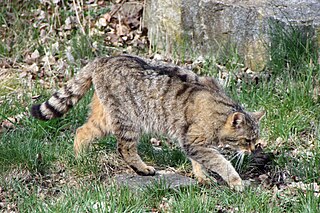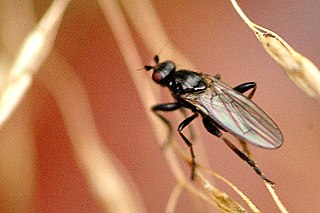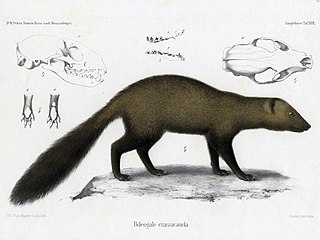
Ernst Heinrich Philipp August Haeckel was a German zoologist, naturalist, eugenicist, philosopher, physician, professor, marine biologist, and artist who discovered, described and named thousands of new species, mapped a genealogical tree relating all life forms, and coined many terms in biology, including ecology, phylum, phylogeny, and Protista. Haeckel promoted and popularised Charles Darwin's work in Germany and developed the influential but no longer widely held recapitulation theory claiming that an individual organism's biological development, or ontogeny, parallels and summarises its species' evolutionary development, or phylogeny.

Geckos are small lizards belonging to the infraorder Gekkota, found in warm climates throughout the world. They range from 1.6 to 60 cm.

Pterodactylus is an extinct genus of pterosaurs, whose members are commonly known as pterodactyls. It is thought to contain only a single species, Pterodactylus antiquus, which was the first pterosaur to be named and identified as a flying reptile.

Acinonyx is a genus within the cat family. The only living species of this genus, the cheetah A. jubatus, lives in open grasslands of Africa and Asia.

Tortoises are reptile species of the family Testudinidae of the order Testudines. They are particularly distinguished from other turtles by being exclusively land-dwelling, while many other turtle species are at least partly aquatic. Like other turtles, tortoises have a shell to protect from predation and other threats. The shell in tortoises is generally hard, and like other members of the suborder Cryptodira, they retract their necks and heads directly backwards into the shell to protect them.

A mongoose is a small terrestrial carnivorous mammal belonging to the family Herpestidae. This family is currently split into two subfamilies, the Herpestinae and the Mungotinae. The Herpestinae comprises 23 living species that are native to southern Europe, Africa and Asia, whereas the Mungotinae comprises 11 species native to Africa. The Herpestidae originated about 21.8 ± 3.6 million years ago in the Early Miocene and genetically diverged into two main genetic lineages between 19.1 and 18.5 ± 3.5 million years ago.

Felis is a genus of small and medium-sized cat species native to most of Africa and south of 60° latitude in Europe and Asia to Indochina. The genus includes the domestic cat. The smallest Felis species is the black-footed cat with a head and body length from 38 to 42 cm. The largest is the jungle cat with a head and body length from 62 to 76 cm.

Johann Friedrich Gmelin was a German naturalist, botanist, entomologist, herpetologist, and malacologist.

Jacob Hübner was a German entomologist. He was the author of Sammlung Europäischer Schmetterlinge (1796–1805), a founding work of entomology.

Philipp Christoph Zeller was a German entomologist.

The Felinae are a subfamily of the family Felidae. This subfamily comprises the small cats having a bony hyoid, because of which they are able to purr but not roar.

Sphaeroceridae are a family of true flies in the order Diptera, often called small dung flies, lesser dung flies or lesser corpse flies due to their saprophagous habits. They belong to the typical fly suborder Brachycera as can be seen by their short antennae, and more precisely they are members of the section Schizophora. There are over 1,300 species and about 125 genera accepted as valid today, but new taxa are still being described.

Termatosaurus is a genus of archosaur known from several specimens spanning two species. Its remains come from the Upper Triassic and was once thought to have survived until the Early Jurassic, but the Jurassic remains were redescribed as plesiosaur remains. It has only been found in France, England, Germany and Switzerland. and two species are known of this animal: the type species, Termatosaurus albertii, named by Meyer and T. Plieninger in 1844; and T. crocodilinus, by Quenstedt (1858). It is very obscure and apparently considered to be dubious.

Bdeogale is a mongoose genus that was proposed by Wilhelm Peters in 1850 based on a mongoose specimen collected in Mozambique. Bdeogale species have compact paws with four symmetrical toes, round ears and a blunt muzzle with a broad round and bare rhinarium. The genus contains four species that are primarily terrestrial and omnivorous and forage in dense vegetation.

Protea welwitschii is a species of shrub or small tree which belongs to the genus Protea, and which occurs in bushveld and different types of grassland.

Cycloderma is a genus of softshell turtles in the family Trionychidae. The genus is endemic to Africa.

Herpestes is a genus within the mongoose family Herpestidae. It is the type genus of the family and comprises ten living species, with several subspecies. Fossil remains of three prehistoric species were excavated in France and described in 1853.

Galerella is a genus of the mongoose family (Herpestidae) native to Africa and commonly called the slender mongooses.

Pelodiscus is a genus of turtles in the family Trionychidae, the softshells. Based on genetic and morphological analysis there are five valid species. They are native to Eastern Asia, ranging from the Amur region, through China, Korea and Japan, to Vietnam.

The Manie van der Schijff Botanical Garden was formally established in 1934 and is managed by the University of Pretoria. Although the garden was originally established to support research and the conservation of indigenous plants, the garden is open to the public.




















